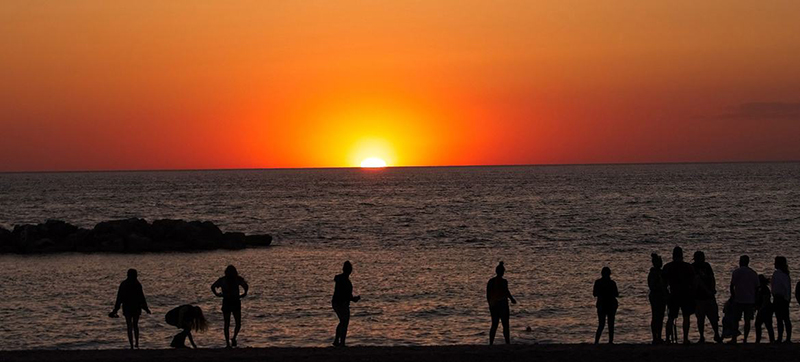 Climate Change
Climate Change
2022 confirmed as one of warmest years on record: WMO
New York: The UN weather agency, WMO, said on Thursday that 2022 was the fifth or sixth warmest year on record, adding to deep concerns that the likelihood of breaching the 1.5 degree Celsius limit of the Paris Agreement “is increasing with time”.
In an alert, the agency also explained that 2022 was the eighth consecutive year that global temperatures rose at least 1C above pre-industrial levels, fuelled by ever-rising greenhouse gas concentrations and accumulated heat.
La Niña impact
The cooling effect of the La Niña phenomenon – now in its third year - prevented 2022 from being the warmest ever.
“This cooling impact will be short-lived and will not reverse the long-term warming trend caused by record levels of heat-trapping greenhouse gases in our atmosphere,” the WMO warned, adding that there is a 60 per cent chance that La Niña will continue until March 2023, followed by “ENSO-neutral” conditions (neither El Niño nor La Niña).
Tweet URL
Regardless of La Niña, 2022 was still marked by dramatic weather disasters linked to climate change, from catastrophic flooding in Pakistan, deadly heatwaves in China, Europe, North and South America, and relentless drought and misery for millions in the Horn of Africa.
In late December, severe storms also began ripping across large areas of North America, bringing high winds, heavy snow, flooding and low temperatures.
WMO chief: invest in preparedness
These emergencies have “claimed far too many lives and livelihoods and undermined health, food, energy and water security and infrastructure”, said WMO Secretary-General, Professor Petteri Taalas, who called for all nations to step up preparedness for extreme weather events.
“Today only half of 193 (UN) Members have proper early warning services, which leads to much higher economic and human losses,” the WMO chief explained. “There are also big gaps in basic weather observations in Africa and island states, which has a major negative impact on the quality of weather forecasts.”
Data analysis by the UN agency showed that the average global temperature in 2022 was about 1.15C (34.07F) above pre-industrial (1850-1900) levels. This compares with 1.09C (33.96F) from 2011 to 2020 and indicates that long-term warming shows no signs of stopping.
Scientific approach
“Since the 1980s, each decade has been warmer than the previous one. This is expected to continue,” the UN agency said, adding that the warmest eight years have all been since 2015, with 2016, 2019 and 2020 constituting the top three. “An exceptionally strong El Niño event occurred in 2016, which contributed to record global temperatures,” WMO explained.
To reach its findings, the UN agency collated and compared weather datasets from the United States National Oceanic and Atmospheric Administration (NOAA), NASA’s Goddard Institute for Space Studies (NASA GISS); the United Kingdom’s Met Office Hadley Centre, and the University of East Anglia’s Climatic Research Unit (HadCRUT); the Berkeley Earth group, the European Centre for Medium Range Weather Forecasts and its Copernicus Climate Change Service; and the Japan Meteorological Agency (JMA).
Millions of meteorological and marine observations were used, including from satellites, said WMO, adding that combining observations with modelled values made it possible to estimate temperatures “at any time and in any place across the globe, even in data-sparse areas such as the polar regions”.
WMO also cautioned against placing too much importance on individual year rankings, as the “differences in temperature between the fourth and eighth warmest year are relatively small”.
Support Our Journalism
We cannot do without you.. your contribution supports unbiased journalism
IBNS is not driven by any ism- not wokeism, not racism, not skewed secularism, not hyper right-wing or left liberal ideals, nor by any hardline religious beliefs or hyper nationalism. We want to serve you good old objective news, as they are. We do not judge or preach. We let people decide for themselves. We only try to present factual and well-sourced news.







